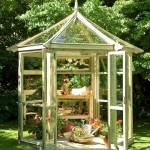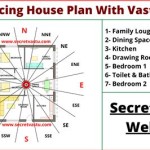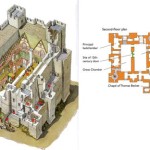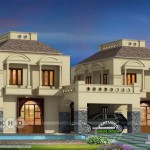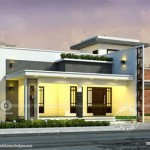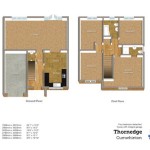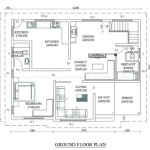House Kit Plans: A Comprehensive Guide
House kit plans offer a unique and often cost-effective approach to home construction. They provide pre-designed blueprints and material lists, streamlining the building process and offering a degree of predictability often absent in traditional construction projects. This article explores the various aspects of house kit plans, from their different types and associated costs to the advantages and disadvantages they present.
House kit plans come in various forms, catering to a range of architectural styles and budgets. Some common types include log cabin kits, timber frame kits, panelized kits, and modular kits. Log cabin kits, as the name suggests, utilize logs as the primary building material, creating a rustic and traditional aesthetic. Timber frame kits employ heavy timbers joined with traditional joinery, resulting in visually striking and structurally robust homes. Panelized kits consist of pre-fabricated wall panels, simplifying on-site assembly and reducing construction time. Modular kits take prefabrication a step further, with entire sections of the house, such as rooms or even floors, built in a factory and transported to the site for final assembly.
The cost of house kit plans varies significantly depending on factors such as the size and complexity of the design, the materials used, and the manufacturer. Basic kits for smaller homes can start at relatively affordable prices, while larger, more elaborate designs can command higher price points. It is crucial to consider not only the cost of the kit itself but also additional expenses such as site preparation, foundation work, finishing materials, and labor costs for assembly and installation. Obtaining detailed quotes from multiple kit providers and comparing them is highly recommended.
One of the primary advantages of house kit plans is the potential for cost savings. The pre-designed nature of the kits and the efficient use of materials can minimize waste and reduce construction time, leading to lower labor costs. Furthermore, many kit manufacturers offer package deals that include all necessary materials, simplifying procurement and potentially offering bulk discounts. The streamlined construction process can also translate to faster project completion, allowing homeowners to move in sooner and avoid extended periods of paying rent or mortgage on existing properties.
Another benefit of house kit plans is the level of customization they offer. While the basic design is pre-determined, many manufacturers allow for modifications to suit individual preferences and site requirements. This can include adjusting room sizes, adding or removing features, and selecting different exterior finishes. Some manufacturers even offer bespoke design services, allowing homeowners to work with architects to create fully customized kit homes that meet their specific needs and vision.
Despite the numerous advantages, house kit plans also present certain challenges. One potential drawback is the need for skilled labor for assembly and installation. While some kits are designed for DIY construction, more complex designs often require professional builders with experience in working with prefabricated components. Finding qualified contractors in certain areas can be challenging and may add to the overall project cost.
Shipping and transportation can also pose logistical challenges, especially for larger kits or remote building sites. The cost of transporting large, heavy components can be substantial and requires careful planning and coordination. Furthermore, access to the building site needs to be adequate to accommodate delivery trucks and heavy equipment.
Building codes and regulations can also impact the use of house kit plans. Local building authorities may have specific requirements regarding materials, construction methods, and energy efficiency. It is essential to ensure that the chosen kit plan complies with all applicable regulations before commencing construction. Working with a local builder or contractor familiar with local building codes can help navigate these requirements and ensure compliance.
Financing a house kit project can also present unique challenges. Traditional mortgage lenders may be hesitant to finance unconventional construction projects, requiring more extensive documentation and potentially offering less favorable loan terms. Exploring specialized financing options designed for kit homes or working with lenders experienced in this type of construction is advisable.
The quality of materials used in house kit plans is another critical factor to consider. While reputable manufacturers utilize high-quality materials, some less reputable providers may use inferior materials that can compromise the structural integrity and longevity of the home. Thoroughly researching manufacturers and reviewing their material specifications is crucial to ensure the quality and durability of the finished product.
Site preparation and foundation work are essential aspects of any construction project, and house kit homes are no exception. The site needs to be properly graded and prepared to ensure a stable and level foundation. The type of foundation required will depend on the design of the kit home and the soil conditions at the building site. Consulting with a qualified engineer or foundation specialist is recommended to determine the appropriate foundation type and ensure its proper construction.
Ultimately, the decision of whether or not to use house kit plans depends on individual circumstances and priorities. Carefully weighing the advantages and disadvantages, conducting thorough research, and seeking professional advice when needed are essential steps in making an informed decision.

Bangalow Imagine Kit Homes Small House Design Plans Floor

We Have Flexible Modular Kit Homes Paal

Steel Home Kit S Low On Metal Houses Green Homes House Plans Kits Pole Barn

One Y Kit Homes Plan 100 A 100m2 Spark

Sears Modern Homes House Kits From Catalogs Hooked On Houses

Floor Plans Zip Kit Homes

Steel Home Kit S Low On Metal Houses Green Homes House Plans Building Pole Barn

10 American Foursquare Sears Kit House Plans Part 1 Everyday Old

1920 House Plans Aladdin Kit Houses Yale American Vernacular With Free Classic Queen Anne Elements

Popular Plans Shelter Kit

